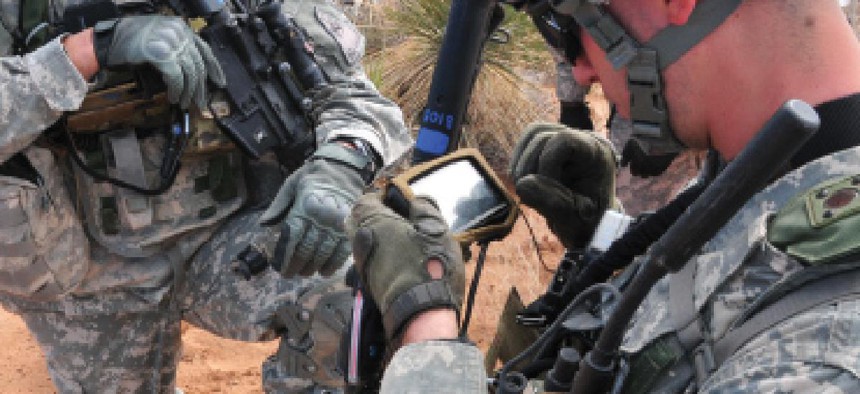Four years on, Army common operating environment takes shape

Army IT personnel are using code to integrate C2 nodes into a common architecture that is the backbone of the sensor computing part of the COE.

The necessity of rapidly deploying IT tools like sensor computing during the wars in Iraq and Afghanistan rendered integration into a common operating environment an afterthought. Then, the focus was on protecting soldiers. Now the Army is shifting its focus to creating a long-term architecture for the service.
“Because of the sense of urgency about all of this, there was no integration amongst all these systems,” said Col. Tony Sanchez, a project manager in the Army Program Executive Office for Intelligence, Electronic Warfare, and Sensors. “In other words, each one of these capabilities was delivered to theater as a stand-alone capability,” devoid of interoperability.
Now, nearly four years after an Army directive to further develop it, the common operating environment (COE) is finally taking shape. Army IT personnel are using code to integrate command and control nodes into a common backbone known as the Integrated Sensor Architecture, a maneuver that would give soldiers much greater access to field data. Sanchez’s office is charged with making all of these sensors “discoverable” so they can quickly interact with other systems using the ISA architecture.
Richard Wittstruck, an official at the Army’s Communications-Electronics Research, Development and Engineering Center, said the COE has taken years to develop because it involves essentially resetting “the tactical network from brigade and below” so that things likes sensors, cloud nodes and command workstations all work with the new architecture.
“We’re attempting to take multiple generations of technology and rather than throwing them away, which would not be in the public’s interest, we’re trying to maximize and optimize their reuse,” he added.
Meticulous testing has also lengthened the timeline for getting the COE up and running. At Fort Dix, N.J., the Army uses a networked environment that mimics the kind soldiers work with across the service to test the sensor computing. There, soldiers and scientists work side-by-side to try to strike a balance between stringent testing and timely deployment.
Data is the glue that makes the sensor-computing environment interoperable. The push for interoperability does not mean Army personnel have “to change what’s inside their black box known as their sensor,” Wittstruck said. “What they are being asked [to do is] to come to standardized agreement on interoperability protocols so that data can be discoverable, so that data can be shared, because it’s really the data that’s the key to the operator’s ability to make informed decisions.”
“They don’t care what product it came from as much as they care about ‘is the data validated’ and ‘what’s our confidence of what the data says,’” he added.
Despite the progress in sensor computing described by Wittstruck and Sanchez, plenty of work remains in the Army’s computing makeover. Much of the gear at forward operating bases in Afghanistan today, 14 years after the U.S. invasion, still needs integrating, Sanchez said.
NEXT STORY: Connecting the cyber and the physical





